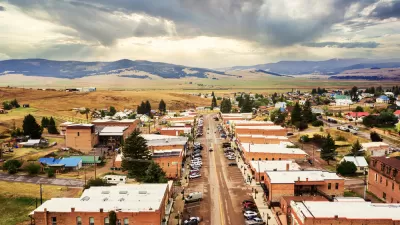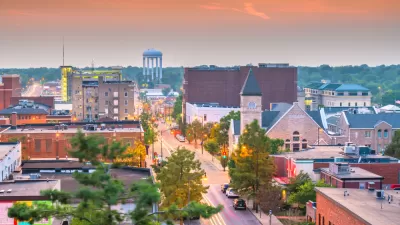The U.S. Census Bureau released its report for the year ending July 1, 2008. It showed that the effect of the recession was to reduce domestic migration from the Northeast and Midwest to the West and Sunbelt. Utah was the fastest growing state.
"U.S. migration typically slows during recessions because new jobs are the primary reason people move across state lines, according to the Pew Research Center. With the country on track to shed more than 2 million jobs this year, there are fewer reasons to move.
William Frey, a senior demographer at the Brookings Institution, said the decrease in migration is notable for its breadth. The housing bust and the recession have slowed migration to fast-growing states in the Sun Belt and the West."
"The long-term trend has been for Americans to leave Northeast and Midwest population centers for warmer, job-creating states in the Sunbelt and West. That movement has slowed, according to the Census. New York, Massachusetts, New Jersey and Connecticut had much higher growth rates last year than they did during the housing boom earlier this decade. Nevada and Arizona, which over the past few years vied to be the nation's fastest-growing state, saw their rates of growth decrease."
"Two states, Michigan and Rhode Island, lost population, with each state suffering unemployment rates greater than 9%."
From U.S. Census Bureau release:
"Utah was the nation's fastest-growing state between July 1, 2007, and July 1, 2008, as its population climbed 2.5 percent to 2.7 million, according to estimates released today (Dec. 22) by the U.S. Census Bureau.
On the whole, the Northeastern states have gained population at an increasing rate since 2005, a turnaround from their declining growth rates from 2000 to 2005."
FULL STORY: Recession Slows Migration in U.S.

Planetizen Federal Action Tracker
A weekly monitor of how Trump’s orders and actions are impacting planners and planning in America.

Congressman Proposes Bill to Rename DC Metro “Trump Train”
The Make Autorail Great Again Act would withhold federal funding to the system until the Washington Metropolitan Area Transit Authority (WMATA), rebrands as the Washington Metropolitan Authority for Greater Access (WMAGA).

The Simple Legislative Tool Transforming Vacant Downtowns
In California, Michigan and Georgia, an easy win is bringing dollars — and delight — back to city centers.

The States Losing Rural Delivery Rooms at an Alarming Pace
In some states, as few as 9% of rural hospitals still deliver babies. As a result, rising pre-term births, no adequate pre-term care and "harrowing" close calls are a growing reality.

The Small South Asian Republic Going all in on EVs
Thanks to one simple policy change less than five years ago, 65% of new cars in this Himalayan country are now electric.

DC Backpedals on Bike Lane Protection, Swaps Barriers for Paint
Citing aesthetic concerns, the city is removing the concrete barriers and flexposts that once separated Arizona Avenue cyclists from motor vehicles.
Urban Design for Planners 1: Software Tools
This six-course series explores essential urban design concepts using open source software and equips planners with the tools they need to participate fully in the urban design process.
Planning for Universal Design
Learn the tools for implementing Universal Design in planning regulations.
Smith Gee Studio
City of Charlotte
City of Camden Redevelopment Agency
City of Astoria
Transportation Research & Education Center (TREC) at Portland State University
US High Speed Rail Association
City of Camden Redevelopment Agency
Municipality of Princeton (NJ)





























